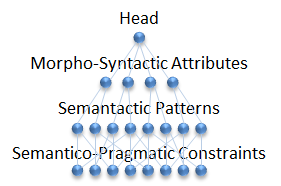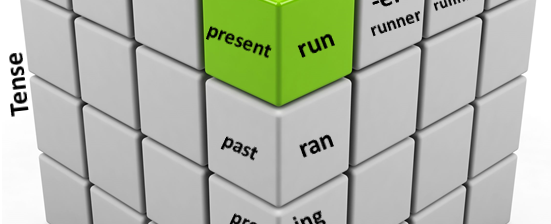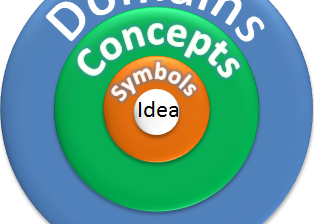Category Archives: Knowledge
16 May Discourse Pragmatics

Pragmatics Context data is critical for disambiguation of words that have many possible meanings. These meanings are almost always mediated by context, therefore understanding context must precede disambiguation. For instance, when standing in a ring appears in the context of a boxing match, ring refers to a physical object with corners. The same phrase, in […]
15 May Analyzing Semantics

Semantics The stratum of semantics is usually associated with meaning. Throughout the 1980s, when I was in college, semantics was viewed as more and more important in text-understanding systems. One aspect of semantics that has received a great deal of attention is thematic or case roles, which can be very useful in defining the roles of words or […]
14 May Analyzing Syntax

Analyzing Syntax Syntactic analysis requires some access to morphological features or characteristics of the words in the sentence being analyzed. Tense, gender and number must be accessible in order to establish agreement. There is clearly some interdependency between morphology and syntax. Morphological phenomena can change categories and roles of words. Roles and categories are the essential components of […]
13 May Patterns at the Boundaries

Morphological Patterns As we have shown in prior posts, we mentally process patterns both at a physical level between neurons and in brain layers, and at a cognitive level in recognition and reasoning. 3-DG uses attributes, patterns and constraints for morphological analysis, as well as analysis at other levels and between other strata. The 3-DG lexicon is organized […]
10 May Word Structure Analysis

Analyzing Morphology In many natural languages, gender or case has a profound affect on morphology – so much so that students have to memorize conjugation tables. It’s really easy to teach computers about conjugation tables and they remember very well. If it were not so, it may be difficult to keep their attention long enough […]
09 May Stratum Morphology

Morphology Morphology is about what happens to words to change their structure, impacting their meaning and usage. In English, we add -s or -es at the end of words to make them plural (guy –> guys, time –> times). Japanese, on the other hand, uses reduplication (hito –>hitobito, toki –> tokidoki) to make words plural. Adding to words, affixation, has three […]
08 May Three-Dimensional Model of Language

Topographical maps of concepts in a text provide useful views of language. Fortuna et al in Semantic Knowledge Management (pp. 155-169) describe how three-dimensional topic maps can both give meaningful insights into clusters of related content, such as news stories or published papers. I have frequently stressed the importance of concept associations in the brain, in cognitive […]
07 May Pairs of Language Strata

The Paired Model By pairing language strata, we attempt to find or describe symmetrical structures in language, thus helping clarify one of the most abstract phenomena known to man: verbal communication. This pairing of characteristics is also useful in decomposing the problem into smaller chunks to make it easier for computers to deal with. A note […]
05 May Learning from Errors

If at first you don’t succeed, try – try again. Humans are pretty good at learning from our mistakes. In fact, some suggest that whatever doesn’t kill you makes you stronger. Today I’d like to riff on that theme a bit, and talk about ways in which machines can implement learning from errors. Error Minimization […]





